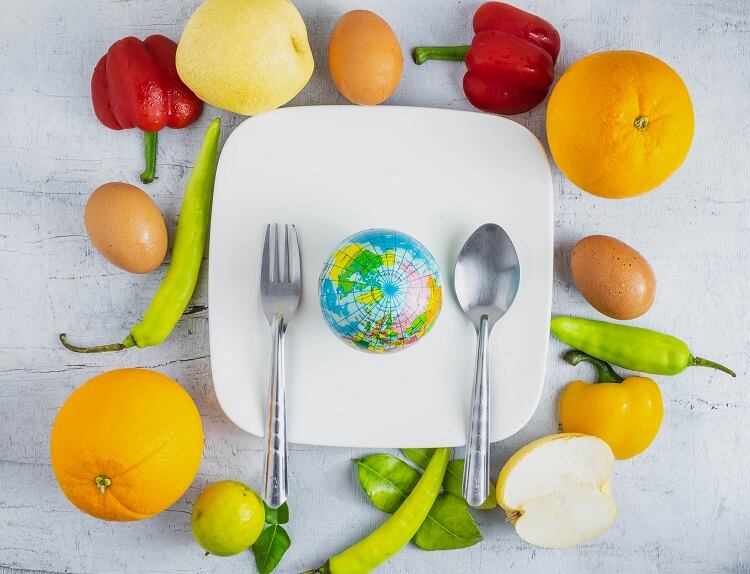The analysis from Oslo-based non-profit EAT looked at the national dietary guidelines and food consumption patterns in the world’s richest economies, the so-called G20.
Basing its definition of a healthy and sustainable diet on previous work from EAT-Lancet, the report found that a ‘handful’ of G20 countries - such as Indonesia, China, India and South Korea - currently maintain national dietary guidelines ‘near’ healthy, sustainable levels. However, others - Argentina, the US and European Union member states – have not adopted diets that are higher in vegetables, grains and nuts and less reliant on dairy and beef.
G20 uses ‘outsized proportion’ of the food carbon budget
Dr Brent Loken, the lead author of the EAT report, Diets for a Better Future: Rebooting and Reimaging Healthy and Sustainable Food Systems in the G20, told FoodNavigator that the researchers wanted to take the global findings on the impact of diet on climate change and ‘tease out what this looks like at a country level’ and ‘who is responsible’.
“When you look at the G20 they play a huge role in the global food system. They are using an outsized proportion of the global food carbon budget,” he explained.
Through a quantification and analysis of current food consumption and national dietary guidelines, the EAT report calculated the total ‘food print’ of each G20 country. It found that when taken together, this bloc—representing 10% of the world’s countries and 64% of the global population—currently accounts for 75% of the total global food-related emissions the planet must maintain to meet Paris Agreement goals.
“We said: ‘What is the absolute maximum amount of cost that the planet can handle to still achieve 1.5C?’ and then based on that budget, how much of that is the G20 using and how much should it be using,” Dr Loken told us.
Currently, individuals in ‘most’ of the G20 countries are eating too much of the ‘wrong food’, such as dairy and red meat. These consumption patterns are coming at the detriment of climate, health and economies, the report authors argued.
The report claimed that increasing consumption of fruits, vegetables, legumes and nuts while lowering consumption of meat and dairy could reduce the G20’s ‘food print’ to around 40% of the total carbon budget for food.
Addressing global hunger
Richer countries need to reduce the amount of greenhouse gases their food consumption is responsible for to deliver a more equitable global food system.
Dr Loken said this is ‘absolutely’ a development issue – and more room needs to be made in the carbon budget for increased production in countries that are currently food insecure. “G20 consumption levels don’t leave a lot of remaining carbon emissions for others to be able to tackle levels of undernutrition. There are still 820m people that go hungry every single day,” Dr Loken stressed.
“Unless we start to open up emission space for other countries to eat more of some foods, we are not going to be able to tackle either climate change or global hunger. The G20 plays a huge role there. Certain countries have to step up.”
If the entire globe were to adopt current G20 consumption patterns, we would need between one and 7.5 additional Earths, depending on which G20 consumption pattern the world adopted, the report noted.
Carving up food’s carbon footprint
The idea behind the report is relatively simple. To keep global warming below 1.5 degrees, as detailed in the Paris Agreement, we have to cap the amount of GHG emissions linked to food production. At the same time, in order to address global hunger, a greater proportion of this ‘carbon budget’ needs to be allocated to countries outside the G20.
“If we know we have to operate within this global food budget, we will have to work out how we will allocate it to different countries. With food, which is different to the other sectors, we are never going to be able to reduce food related greenhouse gas emissions all the way down to zero. At the end of the day, cows will always produce methane, fertiliser will always emit some levels of nitrogen dioxide. There will always be a cost for producing our food,” Dr Loken explained.
The report suggests that a per capita boundary is a sensible approach. Currently, Australia, Argentina, Canada, and France were found to have the highest per capita food-related GHG emissions of G20 countries, with per capita consumption of almost all of the G20 well above planetary boundaries.
“Moving forward, we need to think about contract or converge thinking. Some countries need to contract their consumption behaviours more than others. And then we need to converge around this maximum planetary boundary for food, which means some countries have to raise emissions and some countries have to decrease emissions,” the report author told us.
This could, of course, be easier said than done. Getting the governments of rich countries to agree that they need to change consumption patterns could be no easy feat. “This is a tricky point, how we are going to do this,” Dr Loken conceded.
He suggested that an international framework could be the way forward and believes the topic should be on the agenda for the UN’s 2021 Food System Forum. “There needs to be some sort of international consensus on how we actually do this, how we manage the land, how we distribute this and use this global carbon budget for food. At the same time, we can’t wait for that to happen. Countries have look at this and start making the shift.”




